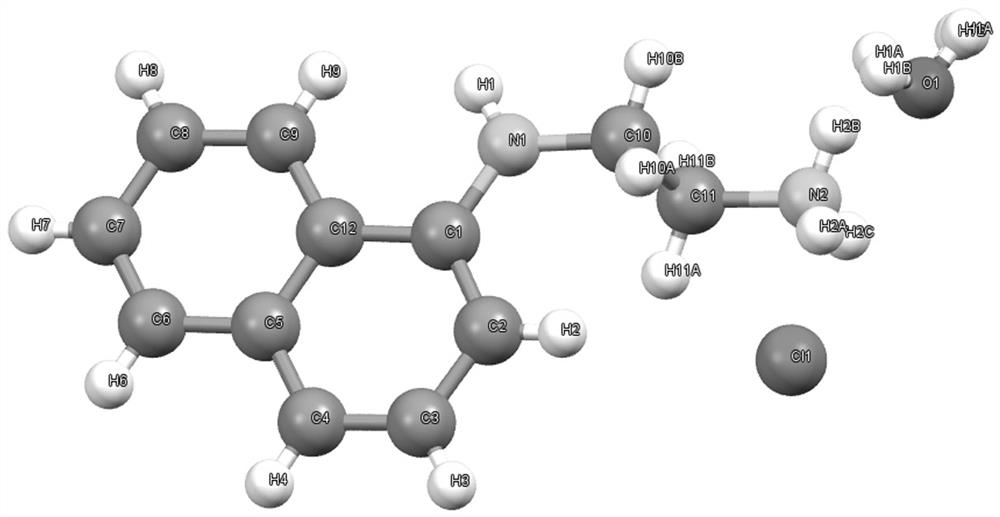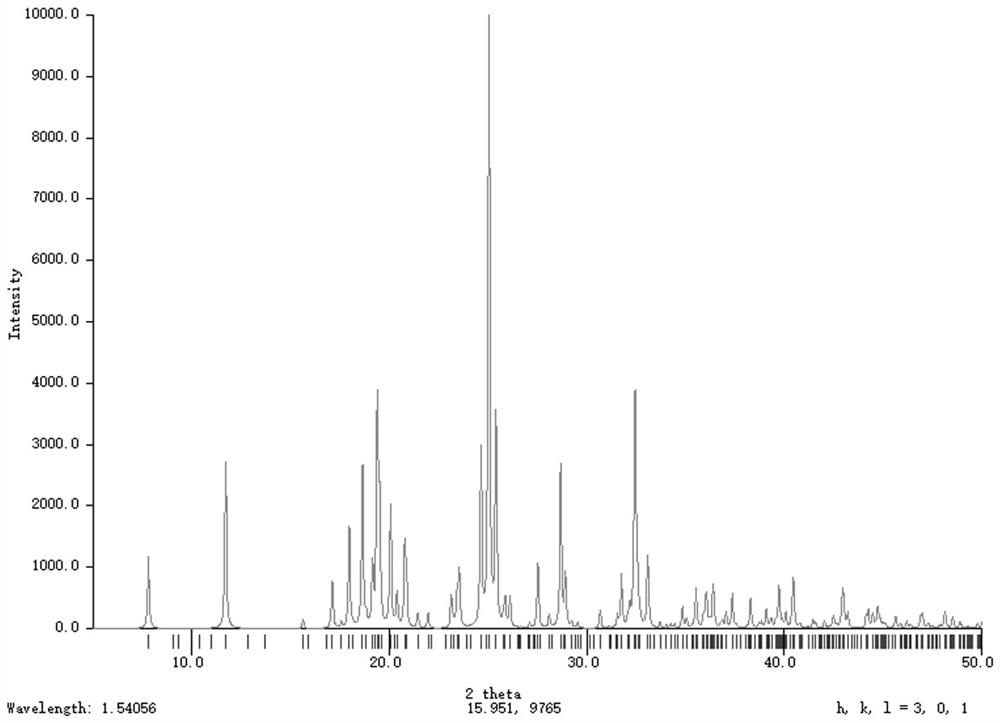Microwave-assisted rapid synthesis method of N-1-naphthyl ethylenediamine hydrochloride
A naphthyl ethylenediamine hydrochloride, microwave-assisted technology, applied in the field of preparation and purification of organic compounds, can solve the problems of ethylenediamine flammability, many operation steps, long reaction cycle, etc., to reduce steps and simplify the process , the effect of convenient operation
- Summary
- Abstract
- Description
- Claims
- Application Information
AI Technical Summary
Problems solved by technology
Method used
Image
Examples
Embodiment 1
[0038] The method for microwave-assisted rapid synthesis of N-1-naphthylethylenediamine hydrochloride comprises the following steps:
[0039] Accurately weigh 1.60 g (0.012 mol) of purchased ethylenediamine hydrochloride and 1.63 g (0.01 mol) of 1-chloronaphthalene, put the former into a round-bottomed flask, and put the latter into a self-made atomizer. A dense mist of 1-chloronaphthalene was regularly sprayed into the bottom flask. When the mist was thick, the 1-chloronaphthalene was continuously sprayed for a period of time until the spraying was completed. Then shake for a few minutes until well mixed and transfer to a sealed reactor. The microwave reactor was set at 300MHz and the rated power was 450W, and the microwave-assisted reaction was started. After the reaction for 1 h, the reaction was stopped, and the reaction was naturally placed and cooled. The solution was transferred to a distillation apparatus for distillation under reduced pressure, and ethylenediamine hy...
Embodiment 2
[0045] The method for microwave-assisted rapid synthesis of N-1-naphthylethylenediamine hydrochloride comprises the following steps:
[0046] Accurately weigh 2.00 g (0.015 mol) of purchased ethylenediamine hydrochloride and 1.63 g (0.01 mol) of 1-chloronaphthalene, put the former into a round-bottomed flask, and put the latter into a self-made atomizer. A dense mist of 1-chloronaphthalene was regularly sprayed into the bottom flask. When the mist was thick, the 1-chloronaphthalene was continuously sprayed for a period of time until the spraying was completed. Then shake for a few minutes until well mixed and transfer to a sealed reactor. The microwave reactor was set at 400MHz and the rated power was 450W, and the microwave-assisted reaction was started. After the reaction for 0.8h, the reaction was stopped, and the reaction was naturally placed and cooled. The solution was transferred to a distillation apparatus for distillation under reduced pressure, and ethylenediamine h...
Embodiment 3
[0051] The method for microwave-assisted rapid synthesis of N-1-naphthylethylenediamine hydrochloride comprises the following steps:
[0052] Accurately weigh 2.66 g (0.020 mol) of purchased ethylenediamine hydrochloride and 1.63 g (0.01 mol) of 1-chloronaphthalene, put the former into a round-bottomed flask, and put the latter into a self-made atomizer. A dense mist of 1-chloronaphthalene was regularly sprayed into the bottom flask. When the mist was thick, the 1-chloronaphthalene was continuously sprayed for a period of time until the spraying was completed. Then shake for a few minutes until well mixed and transfer to a sealed reactor. The microwave reactor was set at 500MHz and the rated power was 450W, and the microwave-assisted reaction was started. After the reaction for 0.5h, the reaction was stopped, and the reaction was naturally placed and cooled. The solution was transferred to a distillation apparatus for distillation under reduced pressure, and ethylenediamine h...
PUM
 Login to View More
Login to View More Abstract
Description
Claims
Application Information
 Login to View More
Login to View More - R&D Engineer
- R&D Manager
- IP Professional
- Industry Leading Data Capabilities
- Powerful AI technology
- Patent DNA Extraction
Browse by: Latest US Patents, China's latest patents, Technical Efficacy Thesaurus, Application Domain, Technology Topic, Popular Technical Reports.
© 2024 PatSnap. All rights reserved.Legal|Privacy policy|Modern Slavery Act Transparency Statement|Sitemap|About US| Contact US: help@patsnap.com









